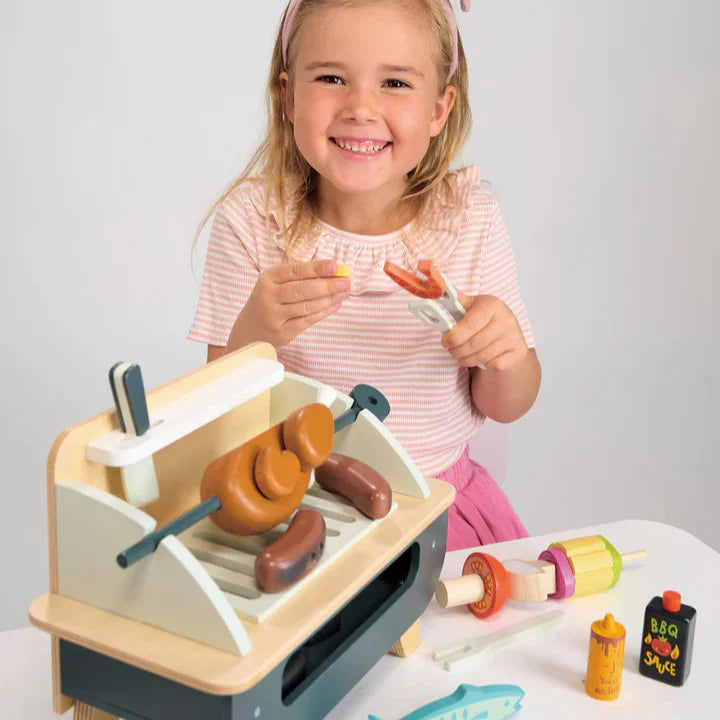Wooden & Montessori Toys – FAQ
Wooden & Montessori Toys – FAQ
(AKA: everything you’ve wanted to ask while your toddler stuffs a block down the heat-pump vent.)
Welcome to Curious Moonbeam’s no-fluff, all-fun FAQ page. Pop the kettle on, rescue the dog from the crayon buffet, and browse our top questions about wooden toys, Montessori materials, and learning-through-play. If your burning query isn’t covered, drop us a note or hit the chat bubble – Steph (Montessori teacher) or Dom (resident toy-geek) will swoop in faster than a two-year-old to an unguarded phone.
1. Why are wooden toys better than plastic?
Wooden toys are the heavyweight champs of the playroom:
- Durability: Solid timber survives couch-launches and sibling skirmishes.
- No nasties: Zero BPA, phthalates or mystery glitter.
- Open-ended play: No flashing buttons means imagination does the heavy lifting.
- Planet perks: Sustainably sourced wood keeps plastic out of landfills and rogue beeping battery-powered toys out of your 3 a.m. dreams.
2. Are wooden toys safer for children?
Yes – assuming you don’t count the occasional block to the foot! Premium wooden toys are sealed with non-toxic oils or water-based paints, and they’re less likely to splinter or shed micro-parts. Fewer choking-hazard dramas; more peaceful coffee-sipping for you.
3. Do wooden toys support child development?
Absolutely. The warm weight of timber fires up:
- Fine-motor control (grasp, twist, stack)
- Sensory integration (texture, weight, smell)
- Problem-solving and narrative thinking (“Can Teddy’s cargo reach the zoo before nap-time?”)
4. How do Montessori toys differ from conventional toys?
Montessori materials:
- Isolate one concept (e.g., size grading or colour matching).
- Include a control of error – kids spot mistakes themselves; no adult rescue required.
- Skip the distractions – no lights, tunes or batteries.
- Use natural materials that feel real and grounded.
Result? Your child thinks, not the toy.
5. Are Montessori toys suitable for four-year-olds?
Definitely. Montessori focuses on stage, not age. Many four-year-olds are refining coordination, language and early maths – think bead stringing, sandpaper letters and number rods.
6. At what ages can children use Montessori toys?
From day dot to double digits:
- 0–6 months: dual interlocking discs (develop wrist rotation), Wooden play gyms
- 6–18 months: object permanence boxes, stacking rings
- 18 months–3 years: mini practical-life tools, shape sorters
- 3–6 years: early literacy & numeracy materials, pretend play
- 6 years+: geometry boards, fraction circles, pretend play
7. How do Montessori toys promote learning?
They present one new challenge at a time, inviting the child to explore, repeat and master – building independence, focus and genuine self-confidence (no performance stickers required).
8. What role do wooden building blocks play in development?
Blocks teach spatial reasoning, balance and early maths. Plus, tower-toppling releases 73 %* of toddler giggles and resets frazzled parent nerves.
*Unofficial lounge-floor statistic.
9. How do I organise toys the Montessori way?
- Fewer items on low, open shelves (making toys accessible, and preventing overwhelm)
- Group by skill or theme
- Rotate weekly to keep interest high
- Invite your child to return each toy before selecting another – library vibes, not toy tornado.
10. Where can I buy Montessori & wooden toys in New Zealand?
Right here! Curious Moonbeam curates mum & educator-approved toys, offers free NZ-wide shipping, and plants a mangrove in Kenya for every order – eco-karma included.
11. Are Montessori toys worth the investment?
Parents say yes. A single hardwood puzzle, wooden vehicle or dolls house entertains multiple siblings across years, still works when the Wi-Fi fizzles, and won’t end up in landfill after the next toy-trend apocalypse.
12. Why do Montessori toys cost more?
Sustainably harvested hardwoods, precision craftsmanship and small-batch production raise costs – but they deliver heirloom quality that mass-plastic simply can’t match.
Still curious?
- Browse our Wooden Toys collection for open-ended favourites.
- Explore Montessori Essentials tailored to each developmental stage.
- Chat with us if you need gift guidance or just want to swap funny toddler stories (we’ve got plenty).
Thanks for supporting a small Kiwi business on a big mission: nurturing curious minds today while re-greening tomorrow. 🌱

